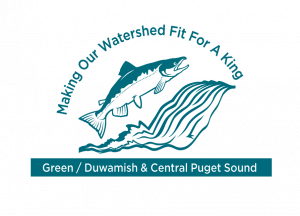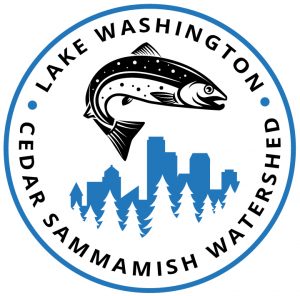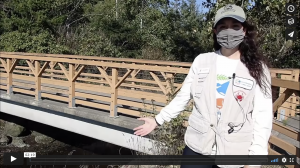Welcome to the Virtual Salmon Heroes Resource Page!
On this page you will find information and links for everything you need for your Virtual Salmon Heroes Experience. If you have any questions about the materials, please contact our Programs Manager: Rosie@EnvironmentalScienceCenter.org
Salmon Heroes Field Journal 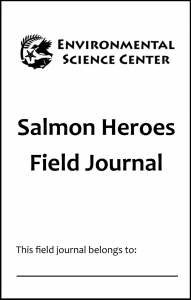
Printed copies of these field journals, along with polarized salmon viewing glasses, are available for each student who is registered for the Salmon Heroes program at our field study locations in south King County, Washington. Please contact Rosie at Rosie@EnvironmentalScienceCenter.org to arrange drop-offs for your school. Digital copies of the field journals are available to be downloaded as PDFs below.
Salmon Heroes student booklet 2023 (English/Spanish)
Salmon Heroes student booklet 2022 (English/Vietnamese)
Salmon Heroes student booklet 2022 (English/Somali)
Salmon Heroes student booklet 2022 (English/Chinese)
Salmon Heroes student booklet 2023 (English/Ukrainian)
Salmon Heroes student booklet 2023 (English/Russian)
Salmon Heroes student booklet 2023 (English/Dari)
Salmon Heroes Family Take Home Letters
Printed copies of the English and Spanish letter are sent home during our final in-person lesson. You can download digital copies here to share with families in English, Spanish, Vietnamese, Somali, Chinese (simplified), Ukrainian, Russian, and Dari.
2023 Salmon Heroes flyer for parents (English)
2023 Salmon Heroes flyer for parents (Spanish)
2023 Salmon Heroes flyer for parents (Vietnamese)
2023 Salmon Heroes flyer for parents (Somali)
2023 Salmon Heroes flyer for parents (Chinese)
2023 Salmon Heroes flyer for parents (Ukrainian)
2023 Salmon Heroes flyer for parents (Russian)
2023 Salmon Heroes flyer for parents (Dari)
Salmon Heroes Videos
The Virtual Salmon Heroes program is divided into three parts, which correspond to what in the past were 1) the Pre-Field Trip Classroom Lesson, 2) the Field Trip, and 3) the Post-Field Classroom Lesson.
Part 1: Introductory Lesson Videos
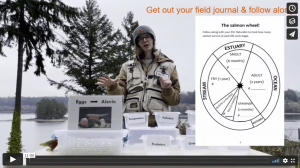 This lesson covers the life cycle and habitats of Pacific Northwest salmon, and divided into multiple videos for convenience and ease of viewing. This first series is divided into six videos, and is in English with Naturalist Alyssa.
This lesson covers the life cycle and habitats of Pacific Northwest salmon, and divided into multiple videos for convenience and ease of viewing. This first series is divided into six videos, and is in English with Naturalist Alyssa.
- Video 1: Pacific Salmon Species and the Puget Sound Watershed (9:23 minutes)
- Video 2: The 3 Cs and Habitat Observations (15:42 minutes)
- Video 3: Eggs, Alevin, Fry, and Smolt Stages of the Salmon Life Cycle (12:13 minutes)
- Video 4: Adult Stage of the Salmon Life Cycle (12:12 minutes)
- Video 5: Spawner Stage of the Salmon Life Cycle (7:05 minutes)
- Video 6: Salmon Life Cycle Model (Marble Demonstration) (11:00 minutes)
You can also use the following link to access a numbered graphic (PDF) that will guide your students through the video series above: Salmon Heroes – Introductory Lesson Graphic. This can be used synchronously with a class or asynchronously by students working independently.
We have the same Introductory Lesson curriculum available in Spanish, with one of our bilingual naturalists. This is a single video rather than a series. For that reason we recommend watching the video in stages and pausing as needed for breaks, note-taking, and discussion.
Water Quality and Stream Survey: Follow along with our naturalists as they perform water quality tests and stream habitat surveys at multiple field sites. The content is divided into multiple videos for convenience and ease of viewing.
Des Moines Creek in Des Moines – a series of three videos – in Spanish with naturalist Carolina
- Introducción con Naturalista Carolina (en español) (2:19 minutos)
- Estudio del arroyo con Naturalista Carolina (en español) (7:48 minutos)
- Análisis de calidad del agua con Naturalista Carolina (en español) (16:39 minutos)
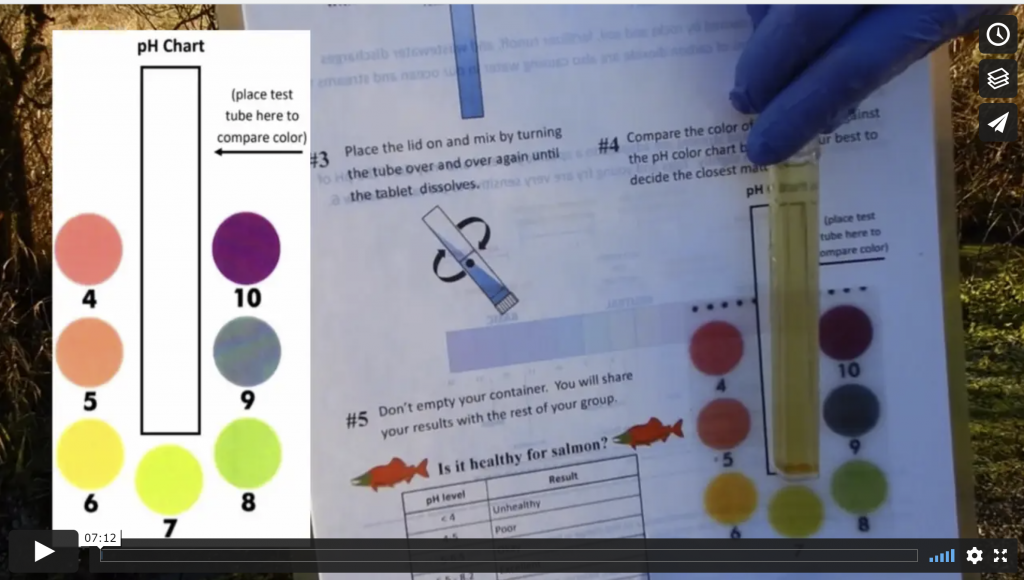
Soos Creek in Kent – a series of six videos – in English with naturalist Alyssa
- Introduction (1:38 minutes)
- Site Walk (3:36 minutes)
- Stream Survey (9:06 minutes)
- Water Quality – Cold (6:26 minutes)
- Water Quality – Clean (7:12 minutes)
- Water Quality – Clear (5:03)
Other Field Lesson Activities: These videos guide students through some of the other lessons and activities that normally take place during our 3-hour field study.
Salmon Anatomy
Salmon Anatomy – Model
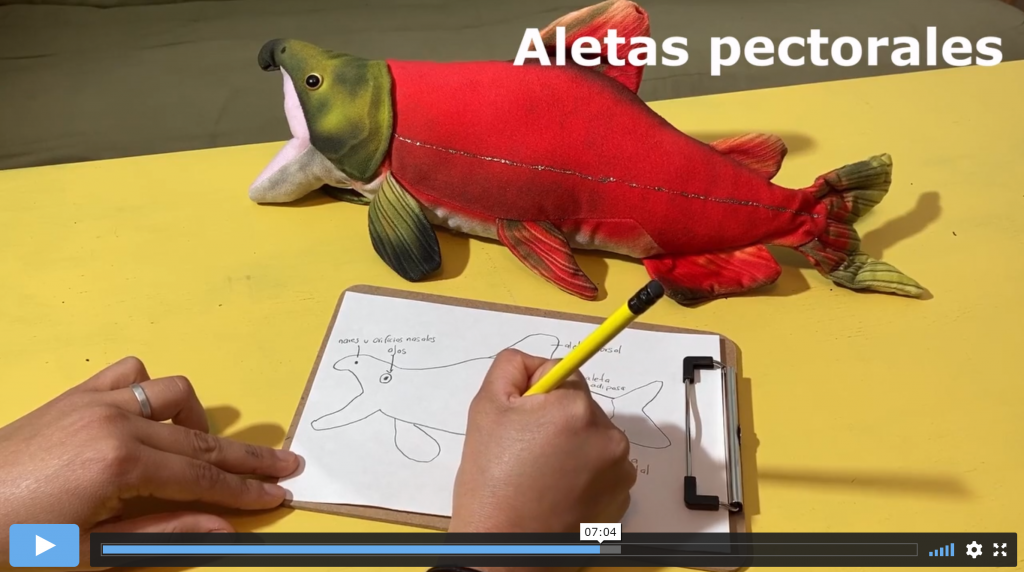
Salmon Anatomy – Dissection
Salmon Scientific Illustration
Macroinvertebrate Sampling

Part 3: Synthesis Lesson Videos
The Synthesis Lesson is the conclusion to our Salmon Heroes Program, and includes guidance from naturalists in analyzing water quality data and discussing solutions to stormwater pollution. This first video features the whole lesson in one video, and for that reason we commend watching it in stages and pausing as needed for breaks, note-taking, and discussion. It is in Spanish with Naturalista Vale.
 Synthesis Lesson Video Series with Naturalist Alyssa (in English) – This is the same content divided into a series of short videos; it uses water quality data from Soos Creek in Kent, WA.
Synthesis Lesson Video Series with Naturalist Alyssa (in English) – This is the same content divided into a series of short videos; it uses water quality data from Soos Creek in Kent, WA.
- Video 1: Introduction – What is synthesis? (4:09 minutes)
- Video 2: Water Quality and Stream Survey Results (13:29 minutes)
- Video 3: Stormwater Runoff (15:23 minutes)
- Video 4: Pollution Solutions (8:33 minutes)
Salmon in our Streams!
A short video showing clips of salmon in our local streams! It is set to a song called “The Watershed”, words and music by Shelley Segal and Dan Lombardo.
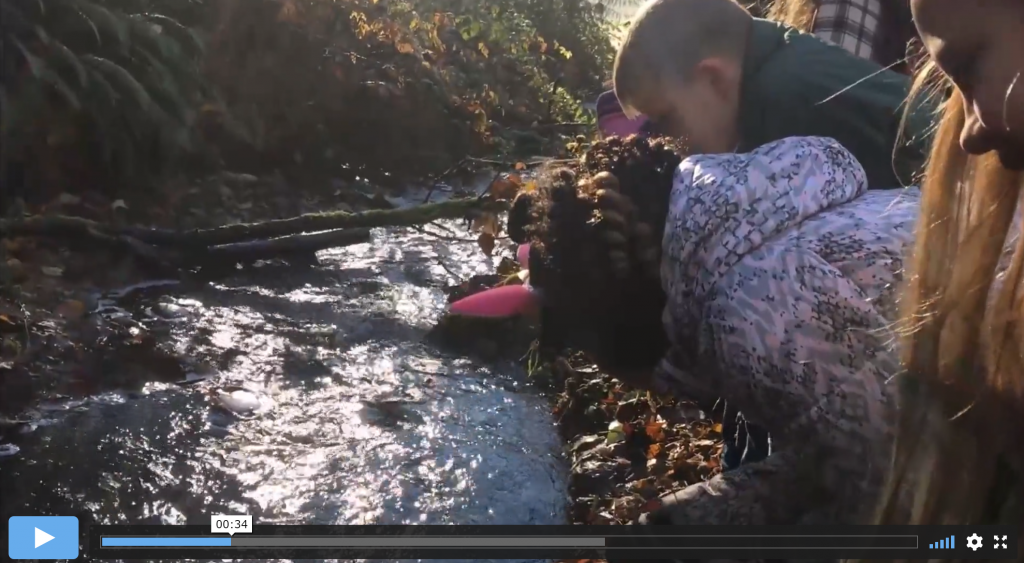
Salmon Heroes and the materials created for this webpage were generously supported from:
- King County Wastewater Treatment Division Waterworks Grant
- King County Flood Control District
- WRIA 9 – Green/Duwamish & Central Puget Sound Watershed
- WRIA 8 – Lake Washington, Cedar, Sammamish Watershed
- The Russell Family Foundation
- King Conservation District
- Beim Foundation and foundry10 (technology support)
- NOAA B-WET Program (This website was prepared by the Environmental Science Center under award NA20NOS4290078 from the Pacific Northwest Bay Watershed Education and Training (B-WET) program of the National Oceanic and Atmospheric Administration (NOAA), U.S. Department of Commerce. The statements, findings, conclusions, and recommendations are those of the author(s) and do not necessarily reflect the views of NOAA or the U.S. Department of Commerce.)



